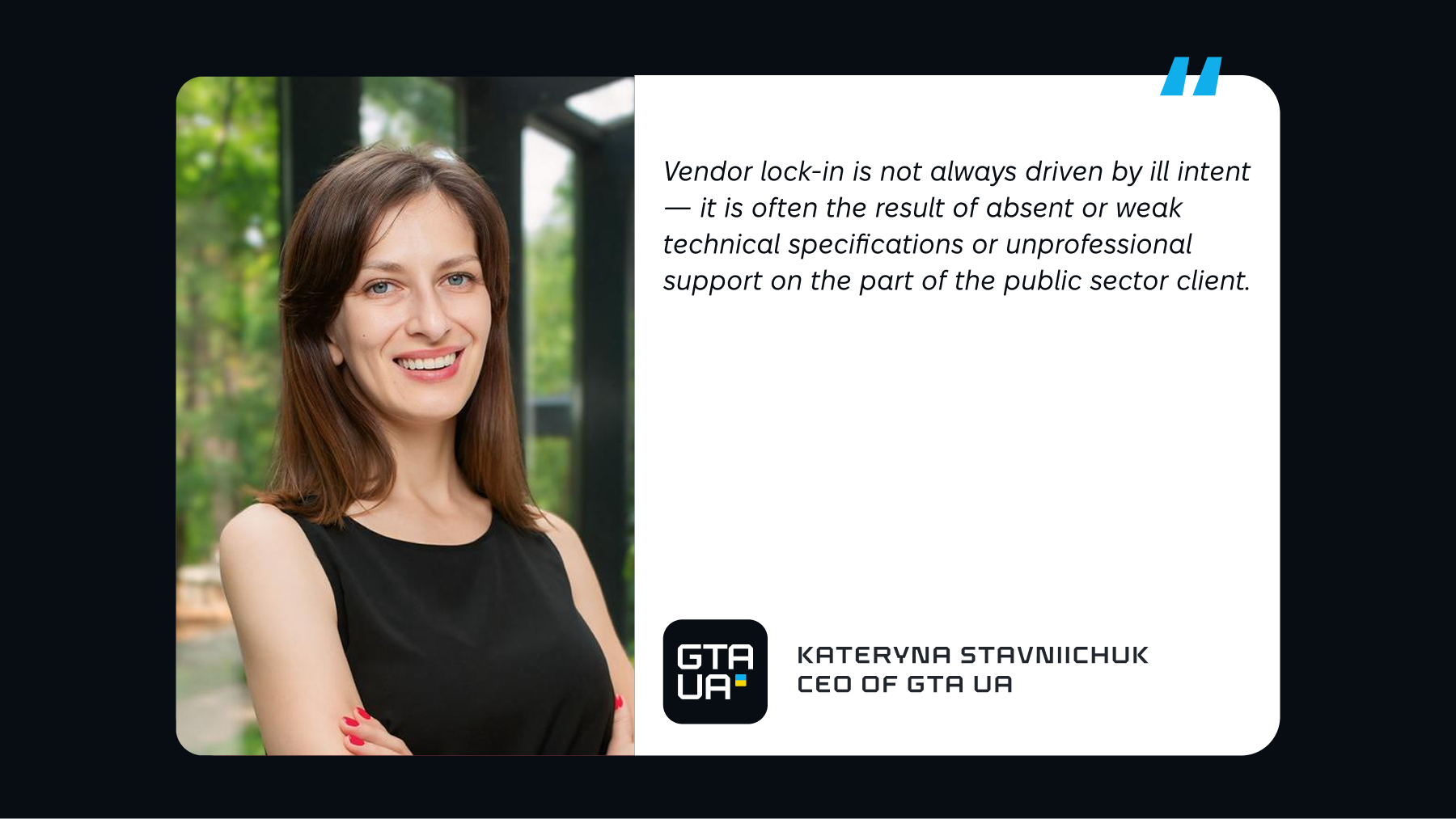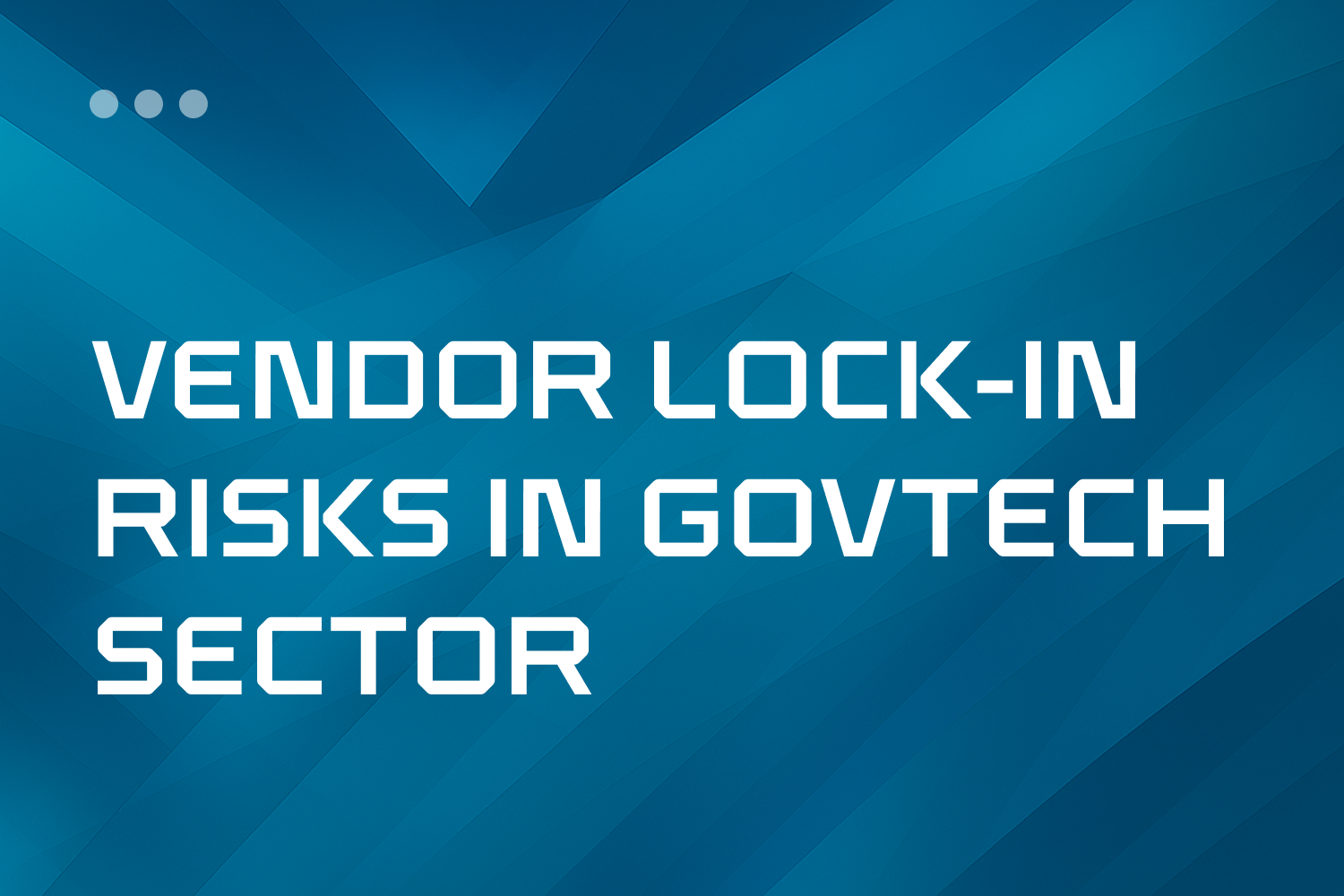Why Vendor Lock-In Is Not Just a Threat to Competition, but a Strategic Vulnerability for the State — GTA UA Interview for dev.ua
Vendor lock-in is one of the most critical risks in the GovTech sector — when a government system becomes entirely dependent on a single vendor, and switching is nearly impossible without losing access, code, or documentation.
In an article by dev.ua, Kateryna Stavniichuk, CEO of the GovTech Alliance of Ukraine and GTA UA members — Oleksii Radchenko, CEO of Prozori Solutions and Oleksandr Iefremo, CEO of Kitsoft — explain why vendor lock-in is not just a threat to competition, but a strategic vulnerability for the state.

What are the consequences?
- Vendors stay locked in for years — even if their performance is poor.
- The government loses full control over core systems and sensitive data.
- Replacing a vendor becomes expensive, risky, and politically sensitive.
What needs to change?
- Transparent regulation for state IT systems.
- Mandatory transfer of all deliverables (source code, documentation, IP rights) to the state.
- Use of open standards and APIs.
- Strengthening the institutional and technical capacity of government agencies.
“An important step to avoid vendor lock-in is using standard and widely adopted technologies, as well as developing solutions based on industry best practices.” — Oleksii Radchenko, CEO of Prozori Solutions, a member company of GTA UA.
“To prevent vendor lock-in, public sector institutions should receive the source code and system documentation, while also building internal technical competence. That’s what we always do.” — Oleksandr Iefremov, CEO of Kitsoft, a member company of GTA UA.
GTA UA is actively working to prevent vendor lock-in. Our members — Kitsoft, Prozori Solutions, MK-Consulting, Strimco, AMEDIA — are contributing to updates to a Resolution of the Cabinet of Ministers of Ukraine on February 21, 2025, No. 205, as part of working groups under the Digital Competence Centre. We also support the training of digital leaders through collaboration with CDTO Campus.
Read the full article on dev.ua (in Ukrainian).








